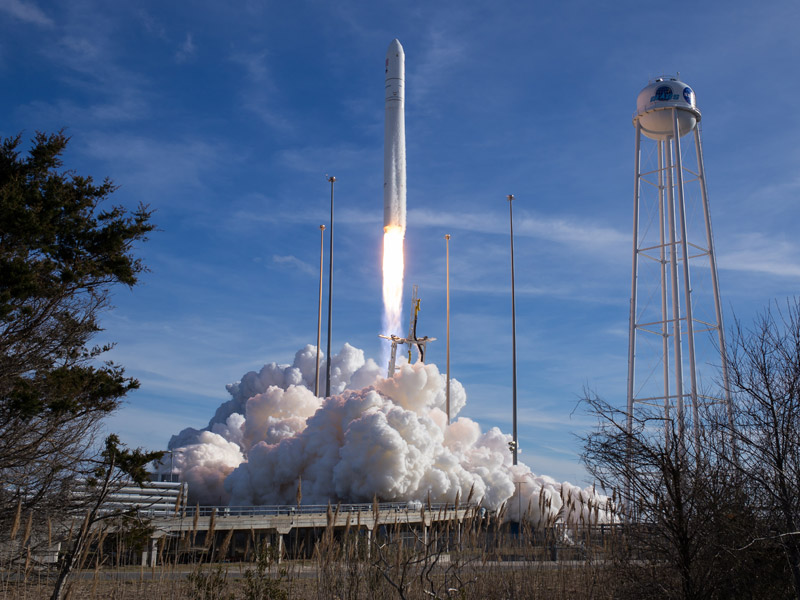Press-center
Press-center

ANTARES LIFTS OFF
The Antares medium-lift rocket developed by American and Ukrainian specialists successfully lifted off on February 15 at 22:21 Kyiv time (Saturday, February 15, at 3:21 p.m. EST), from the Mid-Atlantic Regional Spaceport at NASA’s Wallops Flight Facility in Virginia. It inserted the 13th Cygnus cargo spacecraft into orbit close to the International Space Station. This time the Cygnus cargo spacecraft will deliver the payload of 3750 kg to the ISS for NASA.
Antares is a two-stage vehicle with an optional third stage – the Cygnus cargo spacecraft. Its Stage 1 Core is developed by Yuzhnoye SDO and manufactured by State Enterprise «Production Association Yuzhny Machine-Building Plant named after A.M. Makarov (Yuzhmash) in cooperation with other Ukrainian companies such as LTD RPI HARTRON-ARKOS (Kharkiv), PA Kyivprylad (Kyiv), SMC HARTRON-UCOM LTD (Zaporizhzhia), PJSC Chezara, Sensor production Plant Rapid LTD (Chernihiv).
Antares tests, preparation to launch and the launch itself were carried out with the participation of the specialists of Yuzhnoye SDO, Yuzhmash, and RPI HARTRON-ARKOS. According to the contract, Yuzhnoye SDO provided launch technical support and receiving and processing of real-time telemetric data. The Ukrainian specialists performed their duties completely and professionally.
The 13th Cygnus cargo spacecraft was named after Robert Henry Lawrence Jr. – the first African-American astronaut who was selected by the U.S. Air Force as an astronaut in the Air Force’s Manned Orbital Laboratory program. The 13th Cygnus is the second spacecraft launched by the American Northrop Grumman Corporation within the second resupply missions under the Commercial Resupply Services contract awarded to Northrop Grumman by NASA. This contract envisages four resupply missions to the ISS.
NASA declared that the current mission has three main goals. The MobileSpaceLab, a tissue and cell culturing facility, will be delivered to the ISS. It is a quick-turnaround, high-throughput platform for performing sophisticated biology experiments under space conditions. Such experiments are of great importance for determining how microgravity affects human physiology. Another facility to be delivered to the ISS is Plant Habitat-02 which will cultivate radishes as a modal plant. Growing the food crops in space is necessary conditions for future flights to the Moon and Mars.
During the Spacecraft Fire Experiment-IV (Saffire-IV) investigation, which will use the Cygnus resupply vehicle after it leaves the space station, a number of experiments will be carried out to examine the development and growth of fire in different materials under space conditions. Such experiments are vital for developing flame-resistance materials and fire prevention measures.
The Cygnus cargo spacecraft will stay docked to the space station for five weeks. After undocking from the ISS, Cygnus will start the engine, move to a safe distance from the ISS, re-enter the atmosphere after reaching the decay orbit parameters, and burn up over the Pacific Ocean.
Antares is a striking instance of the active participation of Ukrainian space companies in the international space projects and their strong competitiveness in the international space market.
